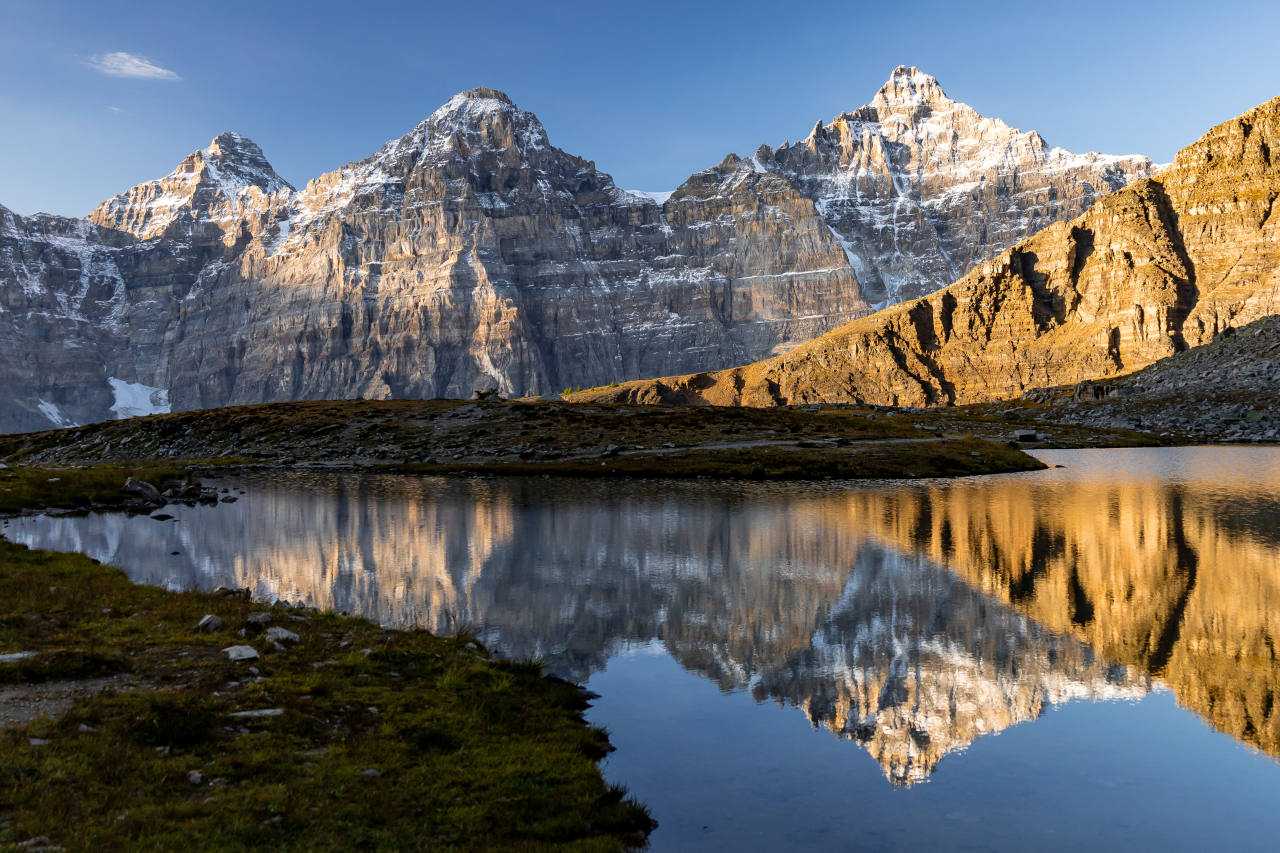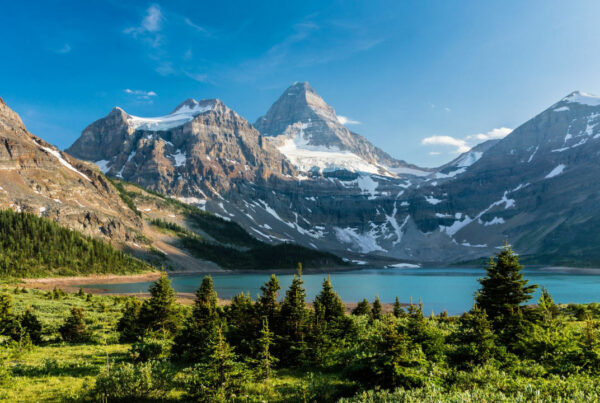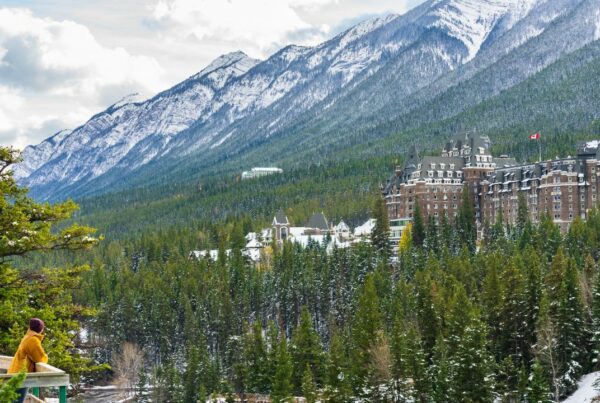Today is National Indigenous Peoples Day in Canada and I believe that an important part of the Reconciliation Process is the restoration of Indigenous place names.
Recently in Banff National Park, this process has begun by inviting local indigenous First Nations back to actively participate in the future of the conservation, recreation and education in the national park.
In 2018, the Stoney Nakoda’s Chiniki Elder Advisory Council worked with the Municipal District of Bighorn in the Telling our Stories project, unveiling eight plaques across the Bow Valley highlighting traditional Stoney Nakoda names.
The plaques can be found by Mount Yamnuska, Indian Flats Road in Canmore, Barrier Lake Travel Information Centre, Dead Man’s Flats, Canmore’s Travel Alberta Visitor Centre, Exshaw and the Chiniki Cultural Centre (here’s a map of the 8 locations).
Here are some of the indigenous First Nations names for important places in Banff, Yoho, Kootenay and Jasper National Parks:
1. Banff has a number of indigenous names from different First Nations groups. Nato-oh-siskoom, which means “Holy Springs” in Blackfoot, Minhrpa meaning “Mountain Where the Water Falls.” in Stoney Nakoda, nipika-pakitik named after the waterfall on Cascade Mountain in Cree and tsa-nidzá “in the mountains” by the Tsuut’ina.
2. Lake Minnewanka comes from Stoney Nakoda word Minn-waki meaning the “lake of the spirits.”
3. Lake Louise is known as Horâ Juthin Îmne (Pronounced Ho-run-num-nay) by the Stoney Nakoda, which means “the Lake of the Little Fishes” because the fish would grow to a smaller size in the icy glacial waters.
4. Canmore is known as Chuwapchipchiyan Kude Bi by the Stoney Nakoda, which translates as “shooting at an animal in the willows” or “shooting at an animal in the willows where there was no animal.” Stoney Nakoda Elder Frank Powderface says the name reflects a hunter who fooled himself by shooting at what he thought was a wolf in the willows, but there was no animal, only willows.
5. The Bow River which flows through Banff and Canmore on its way to Calgary, is named the Bow because First Nations people made bows from Douglas Fir trees that grew along its banks. The Stoney Nakoda name for the Bow River is Ijathibe Wapta which means “a place where people made bows out of Saskatoon saplings” or Mini Thni Wapta meaning “cold river.” In the Blackfoot language, the river is called Makhabn, which means “river where the bow reeds grow” as the reeds there were good for making bows with which to shoot arrows.
6. Athabasca is a prominent word that names a river, waterfall, lake, glacier and mountain in Jasper National Park. It comes from the Cree language and means “Where there are reeds”. The Athabasca Glacier is known as Cha-a tonga by the Stoney Nakoda.
7. Tunnel Mountain is known as Eyarhey Tatanga Woweyahgey Wakân by the Stoney Nakoda, which translates as Sleeping Buffalo Mountain as it resembles a sleeping buffalo when viewed from the north and east. There is a growing movement to rename it to Sacred Buffalo Guardian Mountain as it has a similar name in other First Nations languages such as Iinii Istako in Blackfoot.
8. Yoho National Park is named after a Cree word for “awe and wonder.”
9. Kootenay National Park is derived from the proper name of the Kootenay people, the Ktunaxa. There is some debate about its meaning, but “flowing waters” is a good possibility.
10. Kananaskis is derived from Cree story about Kin-e-a-kis, which translates as “The One Who Is Grateful and comes from the story of a native warrior who survived after receiving a devastating blow to the head with an axe in a fight over a woman at the confluence of the Bow and Kananaskis Rivers that was told to early explorer John Palliser. The local Stoney Nakoda calls the Kananaskis area Ozada, which means the “Meeting Of The Waters” in the Stoney Language.
11. Sulphur Mountain is called Mînî Rhuwîn (translates as foul-smelling water) by the Stoney Nakoda (many places online list it as being called “Spiritual Mountain”, which may be the name used by the Blackfoot). First Nations people used the many hot springs that bubble up from the mountain for healing and they climbed the mountain to harvest numerous medicinal plants, most notably the bark from the Whitebark Pine that grows in subalpine areas.
12. Mount Rundle is known as Waskahigan Watchi or “House Mountain” by the Cree.
13. Maligne Lake is known as Chaba Imne, which means “Beaver Lake” by the First Nations people who lived in Jasper. Amba Wathtetch, Chaba Imne, Ishnyish is a prayer in the Stoney Nakoda language given to bless the lake that translates as “I wish you a good day; I acknowledge all of the good and am receptive to all of the good that’s still to come. Maligne Lake. Thank You.”
14. Sunwapta Falls in Jasper National Park comes from a Stoney Nakoda word for “turbulent water”.
15. Takakkaw Falls in Yoho National Park translates as as “it is wonderful” in Cree. It is the second-highest waterfall in Canada with a main drop of 833 feet, and a total of 1,224 feet from the Daly Glacier above.
16. Mount Assiniboine, which is the highest peak in the southern Canadian Rockies is named after the Assiniboine people. It is also the name for an important river and Assiniboine translates as “those who cook by placing hot stones in water” or “the stone boilers”.
17. Mount Yamnuska derives from the Stoney Nadoda name Îyâ Mnathka, meaning “Flat-Faced Mountain”. However, Yamnuska is a misspelling and translates to “messy hair” (the proper name is Mount E-Yamnusak).
18. Mount Robson, the tallest mountain in the Canadian Rockies is known as Yexyexéscen (Yuh-hai-has-kun) by Texqa’kallt, a Secwepemc (Shuswap) people, which means “The Mountain of the Spiral Road”.
19. Moraine Lake is in the Valley of the Ten Peaks, which derives from the Stoney Nakoda word for 10, which is Wenkchemna. Each of the peaks surrounding Moraine Lake is named after the numbers from the Stoney Nakoda language (east to west): Heejee, Nom, Yamnee, Tonsa, Sapta, Shappee, Sagowa, Saknowa, Neptuak, and Wenkchemna.
Want to hear the Stoney Nakoda language being spoken? Check out some clips from the interactive documentary called In The Name of the Wild.
- Chephren Lake And The Mistaya River Valley - July 1, 2024
- Mindfulness And The 4 Steps of Attention Restoration Theory - June 29, 2024
- 3 Pillars Of An Ecotourism Marketing Strategy For Selling Travel Experiences - June 29, 2024



